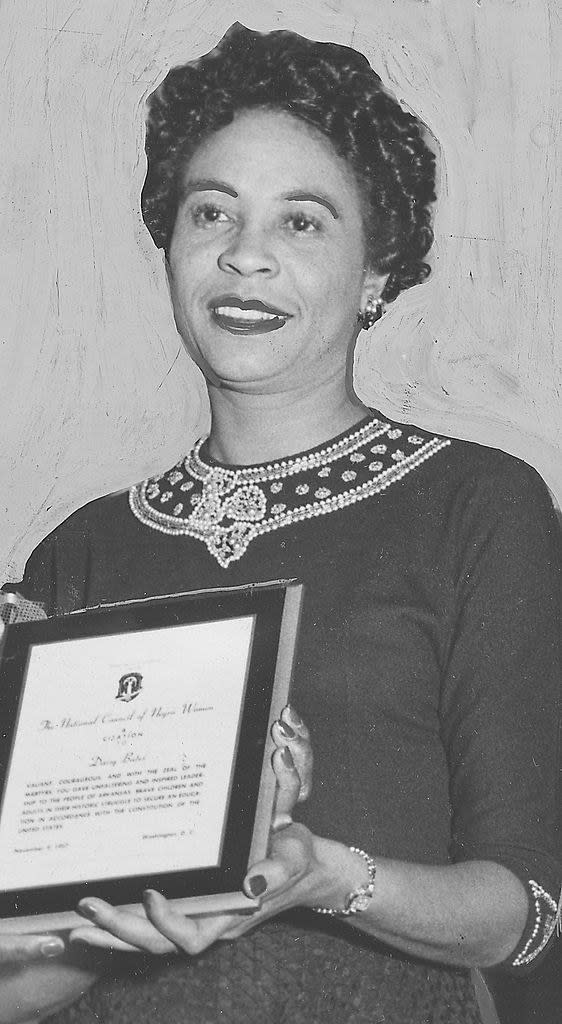21 Truly Fascinating Facts That Sent Me Down Several Rabbit Holes This Week
🚨 Warning: This post contains mentions of drug use, murder, and other sensitive topics. 🚨
1.While about half of panda births result in twins, it's rare for both twins to survive. After giving birth, giant pandas often abandon one of the cubs and choose just one to raise. It's too difficult for a panda to raise two cubs, as their diets, which are primarily made up of bamboo, don't allow them to produce enough milk to sustain two cubs.
Tumblr / Via giphy.com
2.When Wolfgang Amadeus Mozart died in 1791 at age 35, a Berlin newspaper reported that he died from poisoning, with his official cause of death being "fever and rash." Many believed that the composer had been poisoned by Antonio Salieri, a fellow musician who was sometimes seen as Mozart's rival. By the time Salieri died in 1825, rumors flew that Salieri even confessed to the poisoning while on his deathbed. Mozart himself didn't help the rumors: He reportedly told his wife that he believed he had been poisoned just a few weeks before his death.
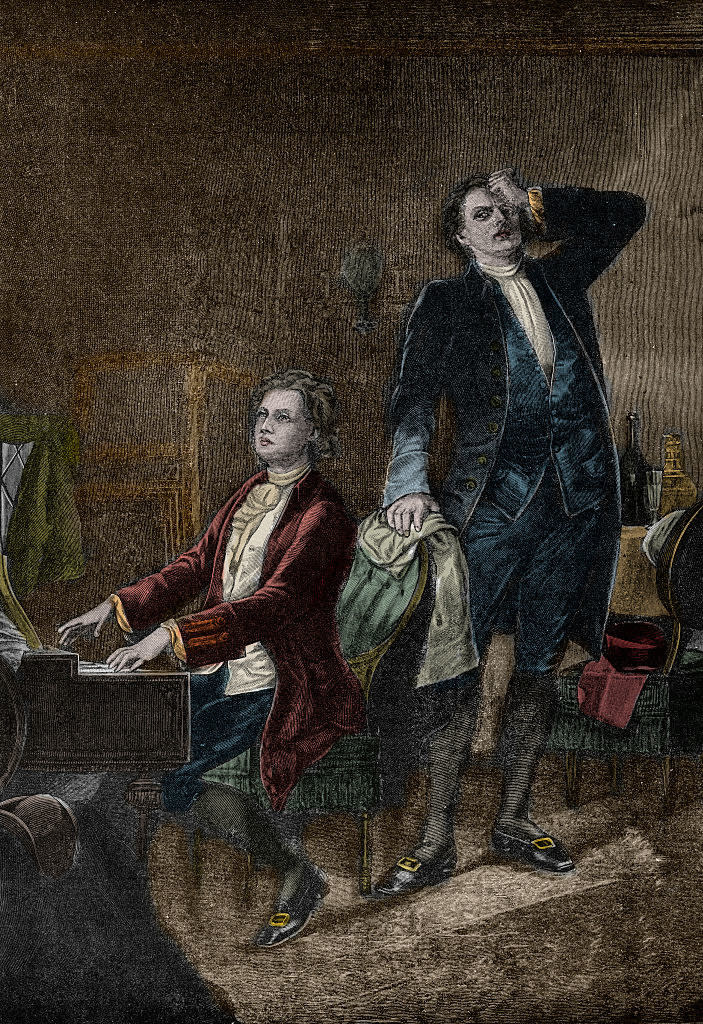
Despite the evidence pointing to a potential poisoning, Mozart's actual cause of death might have been a little less dramatic. In 2009, researchers published a study in the Annals of Internal Medicine that suggested that Mozart actually died from a bad case of strep throat.

3.Before she became one of the world's most famous performers, Madonna worked at a Dunkin' Donuts in Manhattan. She was supposedly fired after accidentally squirting donut filling all over a customer.

4.During Hurricane Katrina in New Orleans, over 2,000 doctors, nurses, patients, and other hospital personnel were sheltered inside Memorial Hospital. As Katrina doused the city, windows shattered and the building shook as the occupants huddled for cover. At some point early the next morning, the power in the hospital went out, rendering some patients, who relied on electronic medical devices to survive, in grave danger. Although the hospital was equipped with generators, they were only designated for emergency lights and equipment that was deemed necessary for survival.

Once the storm passed, Memorial's occupants, largely unaware of the true impact of the storm, awaited rescue. By the morning of August 30, the levees holding back the stormwater snapped, sending water from nearby Lake Pontchartrain flooding through the city. The power grid at Memorial Hospital was located only a few feet above ground, leaving it at risk of severe electrical damage. There was no choice but to evacuate the hospital, including over 200 vulnerable patients. The hospital's emergency plan did not cover what to do in case of a flood, so executives quickly formulated new guidelines: Critical patients and babies in the NICU would be rescued first, while anyone with a Do Not Resuscitate order would be the last to leave because they "had the least to lose."

The issue? Memorial Hospital was home to LifeCare, an independent hospital for patients that needed close care around the clock. Most of LifeCare's 52 patients were on ventilators and were largely left out of the rescue conversations being held by hospital executives. As patients from the main hospital began the evacuation process, LifeCare employees realized they weren't included in the evacuation and were told that if they wanted to be rescued, they needed to seek permission from hospital executives. Dr. Ewing Cook, who worked for Memorial, ordered that all treatments, except those deemed essential, be stopped to lessen the burden on nurses. On August 31, the generators failed, with all 52 LifeCare patients still inside the hospital.

By September 1, employees at Memorial and LifeCare brought all remaining patients to the hospital's first floor and categorized them by likelihood of survival in order to determine who to evacuate first, with Dr. Anna Pou leading the charge. After seeing how slowly the evacuation was progressing, Pou and a team of nurses allegedly gave LifeCare patients a dose of morphine and Versed, a fast-acting sedative, a combination that was known to induce death. When the hospital was investigated in the weeks following Katrina, 45 bodies were recovered. After performing toxicology reports on the bodies, investigators discovered that 23 of them tested positive for the deadly combination, and all had died in the same three-hour span. Doctors later told authorities that they overheard Pou and Cook discussing euthanasia.

It was later determined that at least nine of the deaths could be deemed homicides. On July 17, 2006, Pou was arrested and charged with four counts of second-degree murder, while Lori Budo and Cheri Landry, both nurses who assisted Pou, were arrested. Budo and Landry had their charges dropped in exchange for their testimony. In 2007, a grand jury decided not to indict any of the suspects for their actions at Memorial Hospital. Pou is still a practicing doctor in Louisiana. Sheri Fink chronicled the story in her book Five Days at Memorial. An adaptation of the book, also called Five Days at Memorial, premieres on Apple TV+ on August 12.
5.During periods of extreme strain, Earth's continental plates began to accelerate at speeds up to 20 times faster than their average. About 200 million years ago, the plates began drifting at a speed of 20 millimeters per year, or as fast as fingernails grow.
20th Century Fox / Via giphy.com
6.When Gerald Ford became the President of the United States on August 9, 1974 after Richard Nixon resigned, he officially became the first and only person to serve as president without being elected to either the presidency or the vice presidency. Richard Nixon had selected him to be his vice president after Spiro Agnew, Nixon's running mate, resigned in 1972.

Nixon, who resigned after the Watergate scandal, nominated Ford, who was the House minority leader at the time, to be his vice president following Agnew's departure. In 1973, Ford was confirmed as vice president. This method of replacing the vice president was relatively new. Before Nevada ratified the 25th amendment, which created this new presidential line of succession in 1967, the Speaker of the House would have become the new president. Once Ford became president, the Speaker of the House was his acting vice president until Nelson Rockefeller, his actual choice, was confirmed.
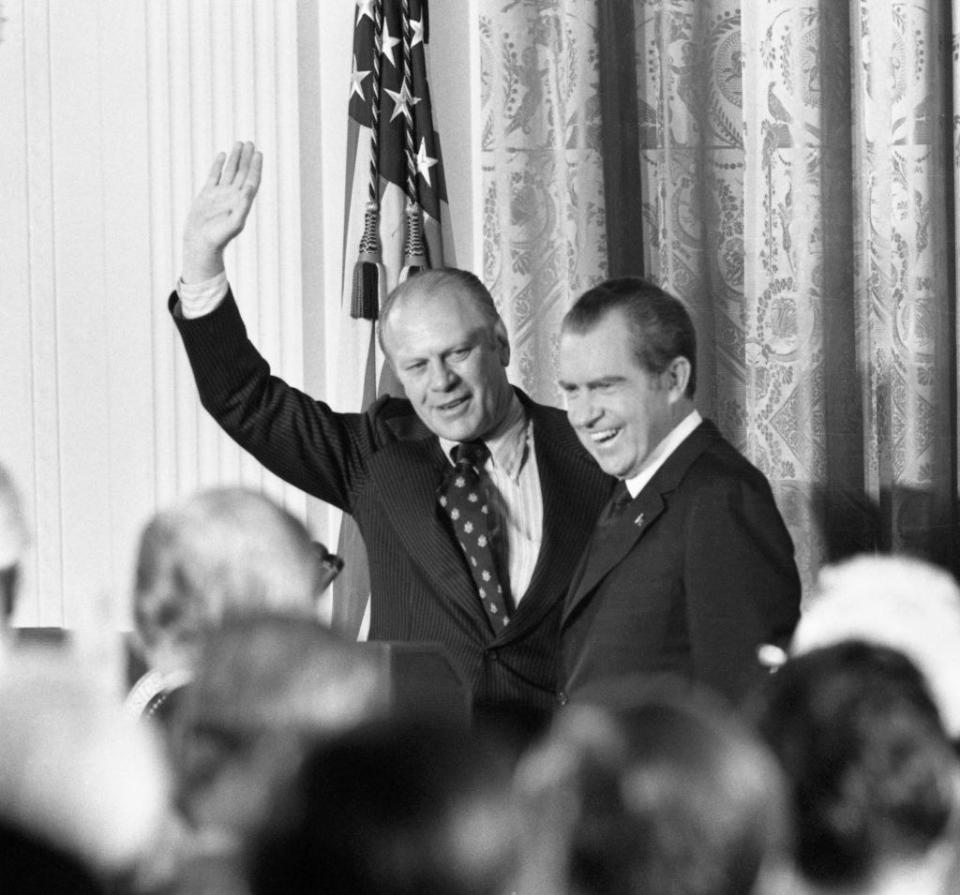
7.Elton John chooses to honor his favorite female musicians by naming his beloved pianos after them. John has named pianos after Aretha Franklin, Nina Simone, and Diana Krall. In 2011, he debuted a new piano that came complete with LED screens that reacted to his playing. The piano, which cost $1.3 million and took four years to construct, was named Blossom after Blossom Dearie, a jazz singer.

8.King Ranch in Texas is bigger than the state of Rhode Island, clocking in at about 825,000 acres. Prior to the land being split up between the owner's children in 1935, the ranch was bigger than the state of Delaware.

9.In 1936, Orson Welles, who went on to direct films like Citizen Kane, made an all-Black verison of Macbeth as part of the Federal Theatre Project, a branch of the Works Progress Administration created to rebound from the Great Depression. The show, which was performed at a Harlem theater, gave Black actors the chance to perform in leading roles, instead of being relegated to background roles or parts that played into racial stereotypes.

The show, which is often called "Voodoo Macbeth," faced immense criticism when it was announced. Members of the Black community thought that Welles was going to make a mockery of them, while major Shakespeare fans thought Welles' casting choices mocked the original play. Welles proved all of the naysayers wrong after the play debuted to rave reviews and went on for a sold-out 10-week run. In 1982, Welles called the play "the greatest achievement of my life," because the show successfully integrated the theater during its run. "Everybody who was anybody in the black or white world was there," he told the BBC. "And when the play ended there were so many curtain calls that finally they left the curtain open, and the audience came up on the stage to congratulate the actors. And that was magical."
10.While I'm sure you're aware that the sun is huge, did you know that it's so massive that 1 million Earths could fit inside of it? Puts things in perspective for you, doesn't it?
Feist / Via giphy.com
11.When the Dakota, which is the oldest remaining luxury apartment building in New York City, began construction on the Upper West Side in 1880, it was one of the first major buildings to be built in the area. Legend has it that workers would joke that it was so far away from everything else in New York City that it felt as far out west as the Dakota territory. The moniker stuck, and the building was officially dubbed the Dakota.

Apartments in the Dakota sold out before construction was even completed. From the grand opening in 1884 to 1929, there wasn't a single vacancy in the building. In 1980, John Lennon was shot outside the building. His widow, Yoko Ono, still lives in the apartment they shared.

12.By the time George Washington was elected president in 1789, his teeth were in such bad shape that he only had one real tooth left in his entire mouth. He had a long history of dental issues, and normally wore dentures, which were comprised of his own teeth that had been pulled, teeth he took from the slaves he owned, and animals. In 1796, he had his final tooth pulled and gave it to his dentist, Dr. John Greenwood, as a gift. Greenwood kept the tooth in a small glass container that hung from his watch chain.
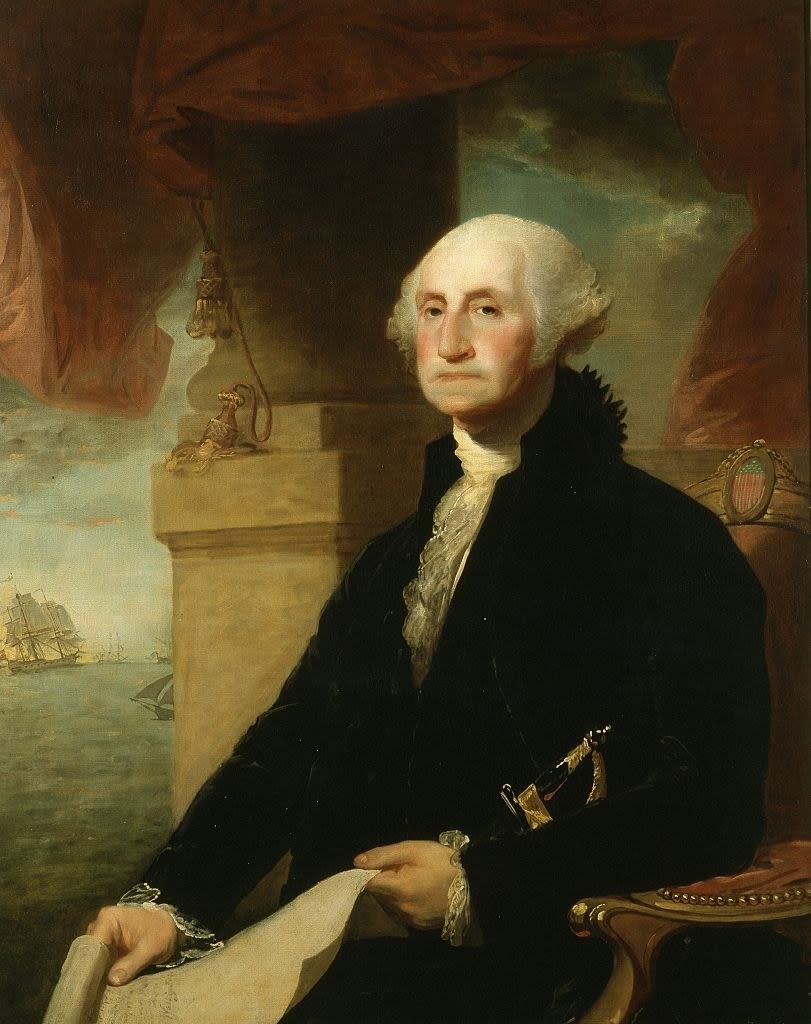
13.In 1976, the Band (yep, that's their actual name) was preparing their farewell concert, which was set for Thanksgiving night in San Francisco. The concert was set to be filmed by Martin Scorsese for a documentary called The Last Waltz. The Band invited tons of their famous friends to perform at the show, including Van Morrison, Joni Mitchell, Bob Dylan, and Neil Young.
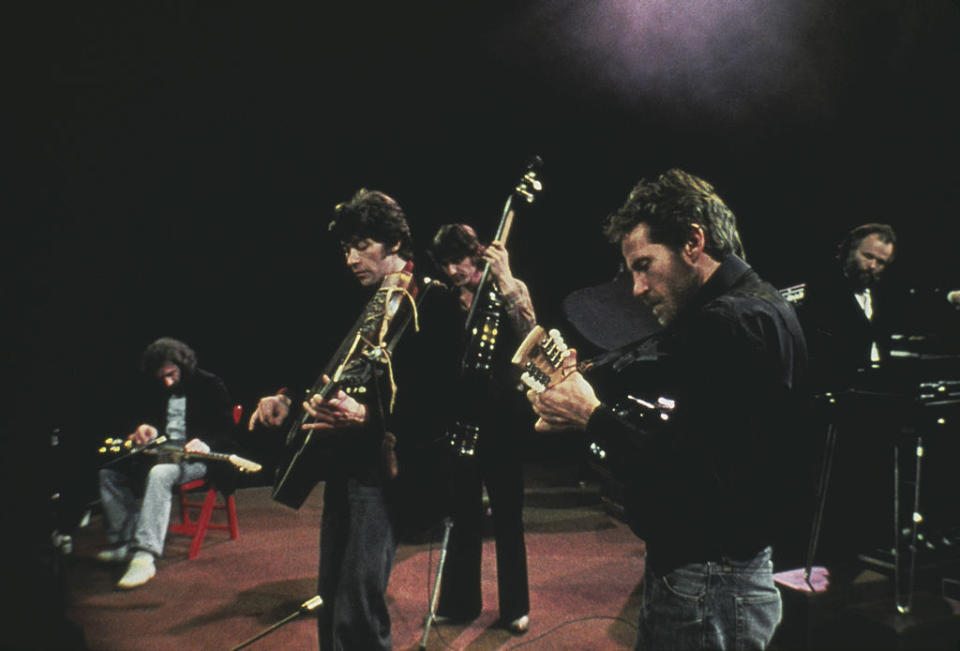
Before Neil Young was slated to perform, he allegedly partook in some cocaine backstage. As he performed his song "Helpless," cocaine residue was hanging from his nostril. Once the filmmakers started reviewing the footage, they found that the cocaine was completely unmissable. Young's manager demanded that Scorsese find some way to edit it out. Scorsese refused, and told the manager that it looked more "rock and roll" that way. However, at some point, Scorsese was convinced to edit the footage.
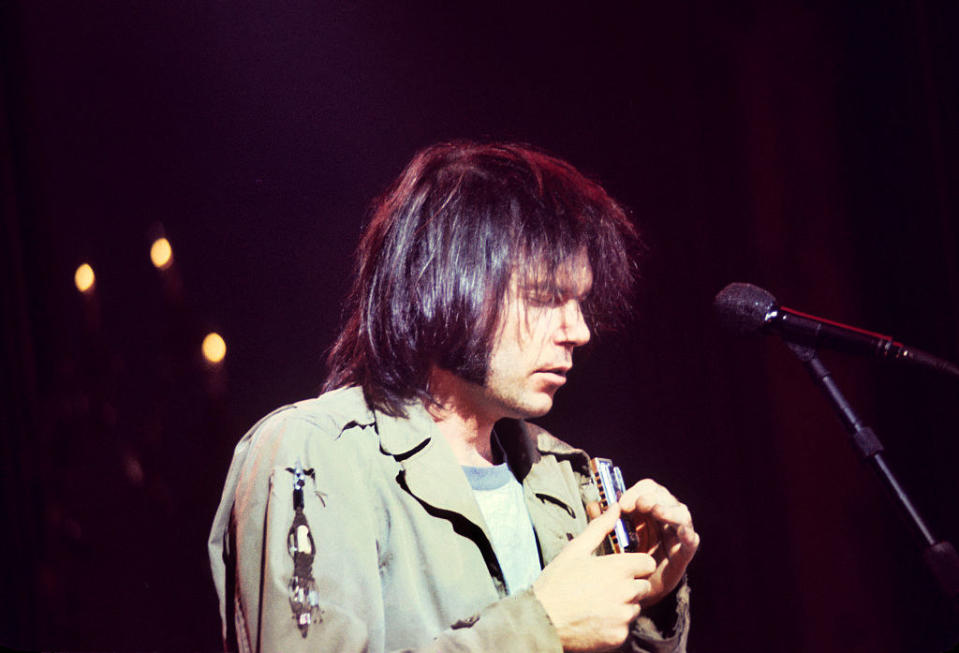
The issue? There was no CGI back in 1976, and editing Young's nose proved to be a bit more difficult than expected. They eventually created what became known as "the traveling booger matte," an effect that hovered over Young's nose as he performed. Robbie Robertson, a member of the Band, joked that it was "the most expensive cocaine [Young] ever bought."
14.In 2012, a brand-new ant species was discovered in a small portion of Manhattan. The ant, cleverly named the "ManhattAnt," was located at the Broadway medians between 63rd and 76th streets in New York City. Scientists said that while they initially believed the ant hailed from Europe, they later learned that it appeared to be a species that was brand new to the entire world.
PBS / Via giphy.com
15.Quentin Tarantino became a huge fan of CSI after watching episodes during breaks on set while filming Kill Bill. When CSI's producers heard that Tarantino was a fan, they invited him to direct an episode. Tarantino ended up directing the Season 5 finale, called "Grave Danger," which critics called one of the show's most intense and horror-filled episodes. "Grave Danger" marked Tarantino's return to TV, after previously directing an episode of ER. He hasn't directed any TV shows since.
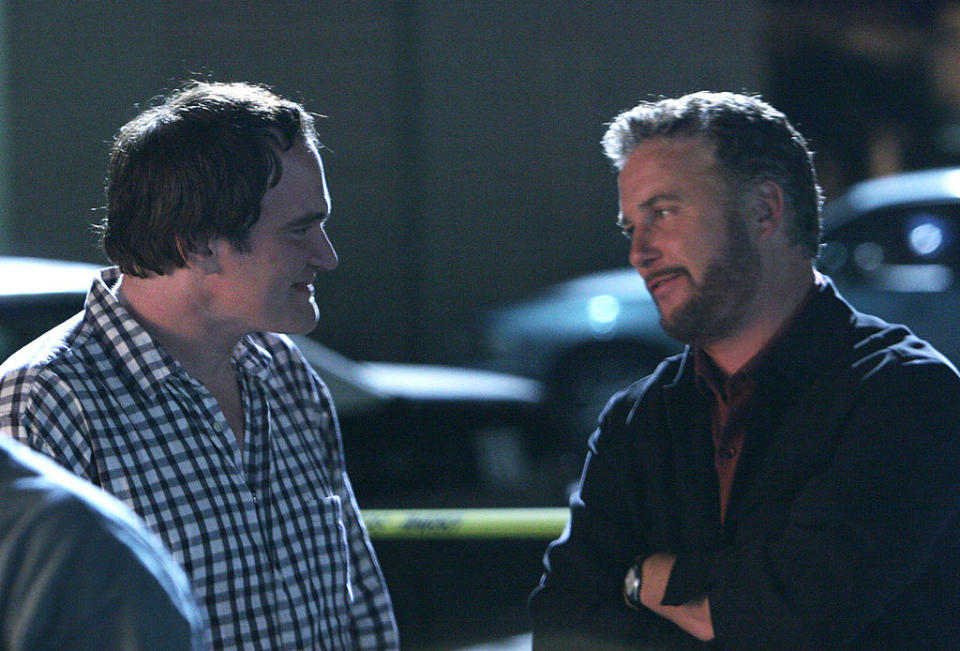
16."The Starry Night," arguably one of Vincent van Gogh's most famous paintings, represents his view from the Saint-Paul de Mausole asylum, located near Saint-Rémy-de-Provence in France. After experiencing a breakdown in 1888, van Gogh checked himself into the asylum. He took several creative liberties with the work, leaving out the metal bars on his window and adding in more of the village than would have been visible from his perspective.

17.Wyoming was surprisingly progressive in the fight for women's rights. In 1924, Nellie Tayloe Ross was elected governor, making her the first female governor of any US state. She had been married to William B. Ross, who served as governor before her. When he died in 1922, she was nominated as the Democratic candidate, and ended up winning the election. During her term, she fought for rights for farmers and refined budgets in schools. Although Ross lost her bid for re-election, she went on to serve as the vice chair of the Democratic National Convention, and was appointed as director of the US Mint by Franklin Delano Roosevelt.

In addition to boasting the first female governor, Wyoming was also the first state to grant women the right to vote. In 1870, a full 50 years before women were federally granted suffrage, Wyoming passed a measure allowing women over the age of 21 to vote and hold office. While this was a huge deal in the fight for suffrage, historians note that the motivation may have been less than wholesome, with many supporting giving women the right to vote instead of granting that same ability to Black men, immigrants, and Native Americans.
Giphy News / Via giphy.com
18.Sharks, who are often dubbed the "garbage cans of the ocean," notoriously eat trash and other less than palatable things they find floating in the sea. Turns out, if they try something they don't like, they can just "evert" their stomachs, meaning they can push their stomach out through their mouth to give it a rinse and get the offending object out.

19.While dating Kelly Preston, George Clooney bought a pet potbellied pig, reportedly as a gift for his then-girlfriend. When the couple split, Preston told Clooney he could keep the pig, who the pair named Max. Max was soon spotted on some of Clooney's movie sets. Clooney allegedly refused to give up the pig when given an ultimatum in not one, but two relationships. Max died in 2006 at age 18, with Clooney calling their bond "my longest relationship to date."

20.In the 1980s, Legacy International, a square dancing organization, lobbied for the square dance to be named the national dance of the United States, but their attempts failed. Legacy International then decided to individually appeal to the states to get them to adopt the square dance as their state dance, even if the state had no significant ties to square dancing. Some believed the push to promote square dancing was part of a conspiracy to get the square dance, which had been fading in popularity, in the physical education curriculum in schools all over the country. The square dance is currently the state dance of over 20 states.
NBC / Via giphy.com
21.And finally, Daisy Bates was one of the people who led the charge to integrate schools during the civil rights movement. When Bates was 3 years old, her mother was killed by three white men in a racially motivated incident. As Bates grew up and understood the situation, she vowed to devote her life to racial justice. After getting married, Bates and her husband settled in Little Rock, Arkansas, where they started one of the only Black newspapers devoted to the civil rights movement. She also worked closely with the NAACP, and eventually gained notoriety for her work when she became president of the organization's Arkansas chapter.
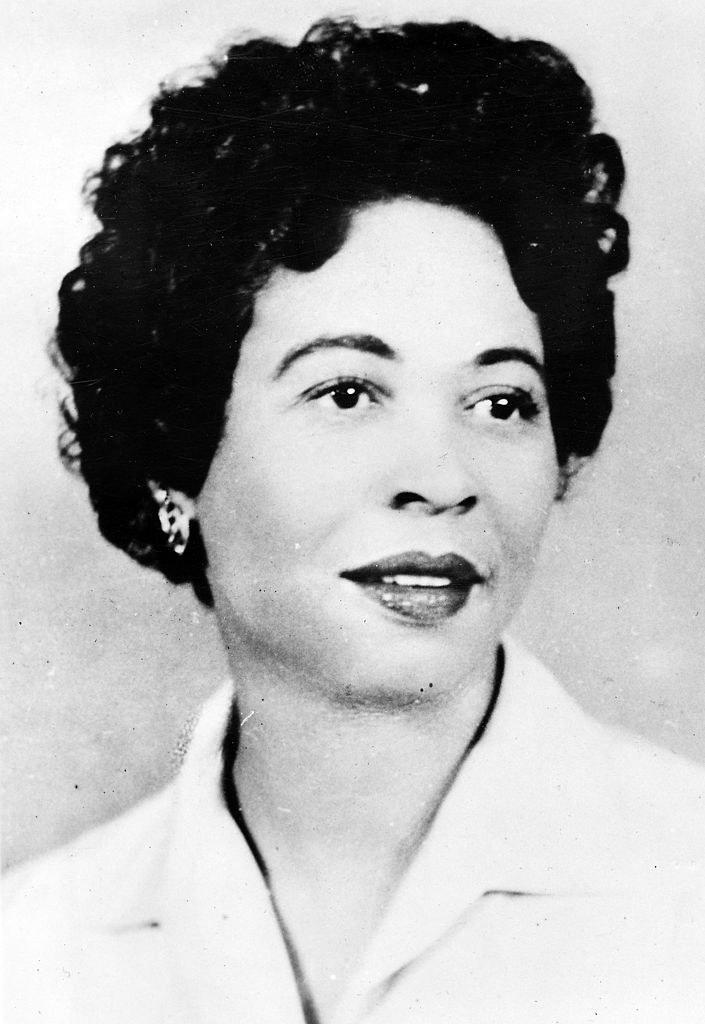
Through her work with the NAACP, Bates started to organize groups of Black students to enroll at all-white schools. If the students were turned away, she would publicize the event in her newspaper, and would praise the schools that followed the federal mandate that integrated schools. When it came time to attempt to integrate schools in Arkansas, Bates was tapped to lead the charge. She selected the students who comprised the Little Rock Nine, drove them to school to protect them, and even joined the school's parent organization to fight for them. Bates faced intense backlash for her work. She was the target of death threats and had to shut down her newspaper as a result.

Despite the danger, Bates continued to organize groups of Black students. Her work eventually lead to national recognition. In 1963, Bates was invited to sit onstage during the March on Washington, and ended up delivering a speech at the event. For the rest of her life, Bates worked to uplift Black communities in Arkansas. She was awarded the Medal of Freedom soon after her death in 1999.
